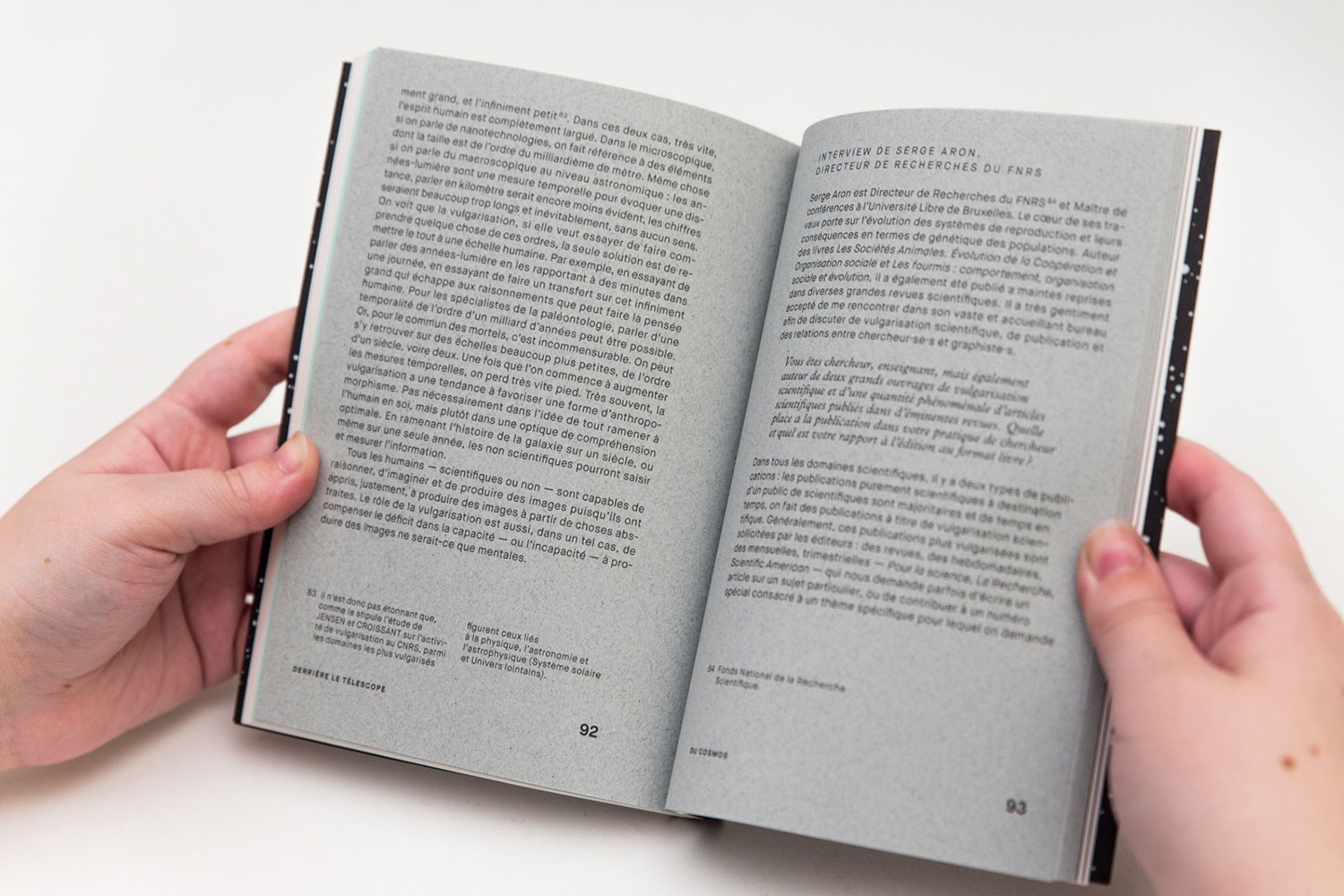Editorial
2018
Du Cosmos
Master Thesis
Popular science publications act as an agent for transmitting and disseminating knowledge held and shared by an "authoritarian" figure in the field to an often inexperienced reader. This transmission enables the sharing of knowledge and, by the same token, the democratisation of knowledge.
The Internet also makes this democratisation of knowledge more accessible. However, the reliability in the profusion of information must often be questioned. However, reliability in the profusion of information must often be questioned. The Internet certainly remains a solution for opening up to information and a serious alternative for building a personal culture, but its abundance of information often makes it lose its value in terms of credibility.
Popular scientific works remain, in my opinion, the most relevant sources of information and should continue to be published.
How, then, can we understand the role of the graphic designer and the publisher in these publications? How can graphic design and editorial choices make them even more relevant and accessible to readers? How is popular science publishing structured when its aim is to make these works more digestible and at the same time to optimise the potential of their content? Finally, how can editorial codes and structures be reversed or strengthened to allow a new generation of contemporary popular science books to be produced in a graphic format?








